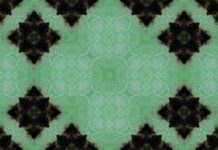Thread networking technology, often referred to as Thread, is a transformative and versatile connectivity standard that has gained significant traction in the field of Internet of Things (IoT). Its ability to provide reliable and secure wireless connectivity for smart devices has revolutionized the way we interact with and control our connected environments. In this comprehensive guide, we will delve deep into the world of Thread networking technology, exploring its historical development, multifaceted applications, and the profound impact it has had on the evolution of smart homes, buildings, and cities.
Thread networking technology, or simply Thread, is a connectivity standard designed for the IoT. It encompasses a range of protocols, specifications, and software that enable smart devices to communicate and form robust, self-healing wireless networks. The term “Thread networking technology” is used to describe the various components and elements that make up this standard, including the Thread protocol itself, the Thread Group consortium, and the Thread networking stack.
The historical development of Thread networking technology is closely tied to the need for efficient, secure, and interoperable wireless communication in the IoT ecosystem. In an increasingly connected world, where a multitude of devices are designed to work together seamlessly, there was a growing demand for a standardized approach to wireless networking.
Thread was born out of the collaborative efforts of several industry leaders who recognized this need. In 2014, the Thread Group was formed, bringing together companies from various sectors, including technology, home automation, and consumer electronics. The Thread Group’s mission was to develop an open and secure networking standard for IoT devices, with a focus on residential and commercial applications.
One of the key motivations behind Thread networking technology was to address the challenges posed by existing wireless protocols, such as Wi-Fi and Bluetooth, in the context of IoT devices. These protocols were designed with different use cases in mind and often lacked the necessary features for IoT, such as low power consumption, reliability, and scalability. Thread was conceived to fill this gap.
Thread networking technology is designed to provide several key benefits that are critical for IoT applications. One of the primary advantages is its low power consumption. Many IoT devices are battery-operated, and Thread’s power-efficient design allows these devices to operate for extended periods without frequent battery replacements.
Reliability is another crucial aspect of Thread. It offers robust and self-healing mesh networking capabilities, allowing devices to find the most efficient path for data transmission. In the event of a device or network component failing, Thread can automatically reroute data through an alternative path, ensuring uninterrupted communication.
Security is a top priority in Thread networking technology. With built-in encryption and authentication features, Thread ensures that data transmitted over the network is protected from unauthorized access. This is especially important in applications where privacy and security are paramount, such as smart homes and commercial buildings.
Interoperability is a fundamental aspect of Thread networking technology. Devices from different manufacturers that conform to the Thread standard can seamlessly connect and communicate with one another. This is a significant departure from the fragmented landscape of earlier IoT protocols, where devices often struggled to work together.
Thread networking technology has found applications in a wide range of IoT use cases, with a particular focus on smart homes, commercial buildings, and industrial settings. Let’s explore some of these applications in more detail.
In the realm of smart homes, Thread has made significant inroads. Smart lighting systems, for example, benefit from Thread’s low power consumption, allowing smart bulbs to last for extended periods without battery replacements. Thread’s reliability ensures that commands to control lighting are executed without delay or disruptions.
Home security systems have also embraced Thread networking technology. Devices like smart door locks and surveillance cameras require a secure and reliable network to function effectively. Thread provides the necessary connectivity for these devices to communicate seamlessly and ensure the security of the home.
Heating, ventilation, and air conditioning (HVAC) systems are another area where Thread has made a substantial impact. In smart HVAC systems, Thread-enabled thermostats and sensors can work together to optimize temperature control and energy efficiency. The reliability of Thread ensures that temperature adjustments are executed promptly.
Thread’s applicability extends beyond residential settings into the commercial and industrial domains. In commercial buildings, the technology is used to create efficient lighting systems that automatically adjust based on occupancy and daylight conditions. This results in energy savings and improved occupant comfort.
Building automation systems also leverage Thread networking technology for a wide range of applications. These systems include fire alarms, access control, and environmental monitoring. Thread’s reliability ensures that these critical systems operate seamlessly, providing safety and security to building occupants.
In industrial environments, Thread is employed for asset tracking and condition monitoring. Thread-enabled sensors can provide real-time data on the location and status of equipment and machinery. This information is invaluable for optimizing operations and reducing downtime.
The impact of Thread networking technology is particularly evident in the development of smart cities and urban infrastructure. As cities become more connected and data-driven, the need for reliable and efficient communication networks has grown. Thread addresses this need by providing the connectivity backbone for various smart city applications.
In the context of smart cities, Thread is used for intelligent street lighting systems. These systems can adjust lighting levels based on real-time conditions, resulting in energy savings and enhanced safety. Thread’s ability to support large-scale deployments is essential for cities with extensive lighting networks.
Smart parking solutions also rely on Thread networking technology. Sensors embedded in parking spaces can detect vehicle presence and transmit this information to a central system. Drivers can then access real-time parking availability data, reducing the time spent searching for parking spaces.
In the area of environmental monitoring, Thread-enabled sensors are deployed to measure air quality, temperature, and noise levels in urban areas. This data is valuable for city planners and policymakers to make informed decisions about urban development and infrastructure improvements.
The ongoing development of Thread networking technology continues to expand its capabilities and applications. As more manufacturers and developers embrace the Thread standard, the range of compatible devices and solutions is expected to grow. This, in turn, will drive further innovation and advancements in IoT.
In conclusion, Thread networking technology is a transformative standard that has revolutionized IoT connectivity in smart homes, commercial buildings, industrial settings, and smart cities. Its historical development was driven by the need for a standardized, secure, and reliable wireless protocol for IoT devices. Thread’s low power consumption, reliability, security, and interoperability have made it a key enabler for IoT applications.
Thread has found applications in a wide range of IoT use cases, including smart lighting, home security, HVAC, building automation, and industrial monitoring. In smart cities, Thread is instrumental in intelligent street lighting, smart parking solutions, and environmental monitoring. Its role in facilitating data-driven urban development is pivotal.
The future of Thread networking technology is marked by continued growth and adoption. As the IoT ecosystem continues to expand, the demand for reliable and efficient connectivity solutions will only increase. Thread’s ability to meet these demands positions it as a crucial player in the evolving landscape of IoT and smart cities. The journey of Thread networking technology is a testament to its ability to shape the future of connected environments and the way we interact with them.


















